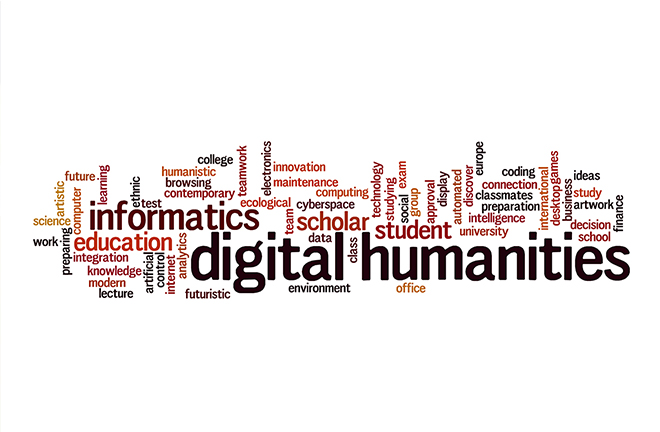Academic publishing and evaluation for the digital humanities

Digital humanities Photo: TUCHONG
Academic production and consumption, which encompass research, publication, evaluation, management and other activities, constitute an academic ecosystem. The development of the digital humanities in China has accelerated since 2019 when the Ministry of Education of the PRC started to vigorously promote the construction of “new humanities and social sciences,” leading to changes in the knowledge basis, research methods, and access to literature within the humanities and social sciences.
Academic publishing
In the age of print, connections between different texts, media, and forms of knowledge were weak. In the digital age, these connections have become more direct and immediate. It can be argued that digital publishing in the strict sense denotes new forms of publishing such as database publishing and semantic publishing, rather than simply the digitization of print publications. Academics often view publishing as an act of making a piece of work public in whatever way. Michael Bhaskar, a British writer and publisher, believes that review and promotion are central to publishing, because they serve to determine what is to be made public.
Currently in China, digital publishing for the humanities and social sciences is typically achieved through integrating print publishing with database publishing. Editorial boards are responsible for publishing print journals, while database providers digitize the journals to publish them in the form of databases. As journals and database providers both lack the ability to function as the main body of digital publishing, database publishing has become disconnected from academic production. Only by creating a new model that enables academic production and academic exchange to fully fulfill their mission can the main body of digital publishing emerge and the digital transformation of academic publishing be truly accomplished.
The task of information filtering is traditionally undertaken by journals and other publishing media, while the era of digital publishing requires new forms of media with information filtering capabilities, potentially platform-based media. This type of media would continue to perform the function of editorial selection and review to ensure content quality, while also delivering targeted content to users as promotion. On this basis, such media may be able to offer knowledge and information solutions and personalized services by accommodating new forms of publishing such as open access, enhanced publishing, and semantic publishing, embedding technical tools for optical character recognition, deep learning, and natural language processing, as well as integrating different types of databases.
Academic evaluation
Digital humanities research, as a relatively new form of research output, largely remains on the margins of review, publication, citation, and reprinting. Certain outputs in the form of datasets, visualized data, websites, and software rather than journal papers or monographs are even less likely to be recognized in the current academic evaluation system. To overcome this disadvantage, digital humanities scholars need to actively engage in the optimization of the academic evaluation system.
It is necessary to clarify the conceptual boundaries of the digital humanities and gradually establish the basic framework and the standards for evaluating digital humanities research. More scholars should strive to demonstrate the academic value of digital humanities research with high quality output and set the standards for comparative evaluation of digital humanities research and humanities research in a broader sense. Digital humanities scholarship needs to integrate the lines of thought of traditional disciplines and effectively address the key issues affecting disciplinary development in order to give fresh insight to traditional disciplines and enhance their vitality.
The design of the academic evaluation system should be more friendly to emerging disciplines and interdisciplinary research. In quantitative evaluation, the impact factor centered on the number of citations is overly simplistic. Digital humanities scholars can introduce more sophisticated algorithms and establish a more diversified and refined quantitative evaluation system. For instance, as social networking services are thriving today, reviews, likes, and recommendations on social media can supplement traditional citations and evaluations. Altmetrics provide a promising solution in this regard, as they can reflect the impact of research output immediately and from multiple angles.
The era of digital humanities calls for a new academic ecosystem characterized by interdisciplinary integration and collaboration between the humanities and technology. All parties should work together to facilitate the healthy development of academic evaluation by tapping into new ideas and technologies, thus guiding academic research and publishing.
Sang Hai is an editor of the Journal of Digital Humanities sponsored by Tsinghua University.
Edited by WANG YOURAN
